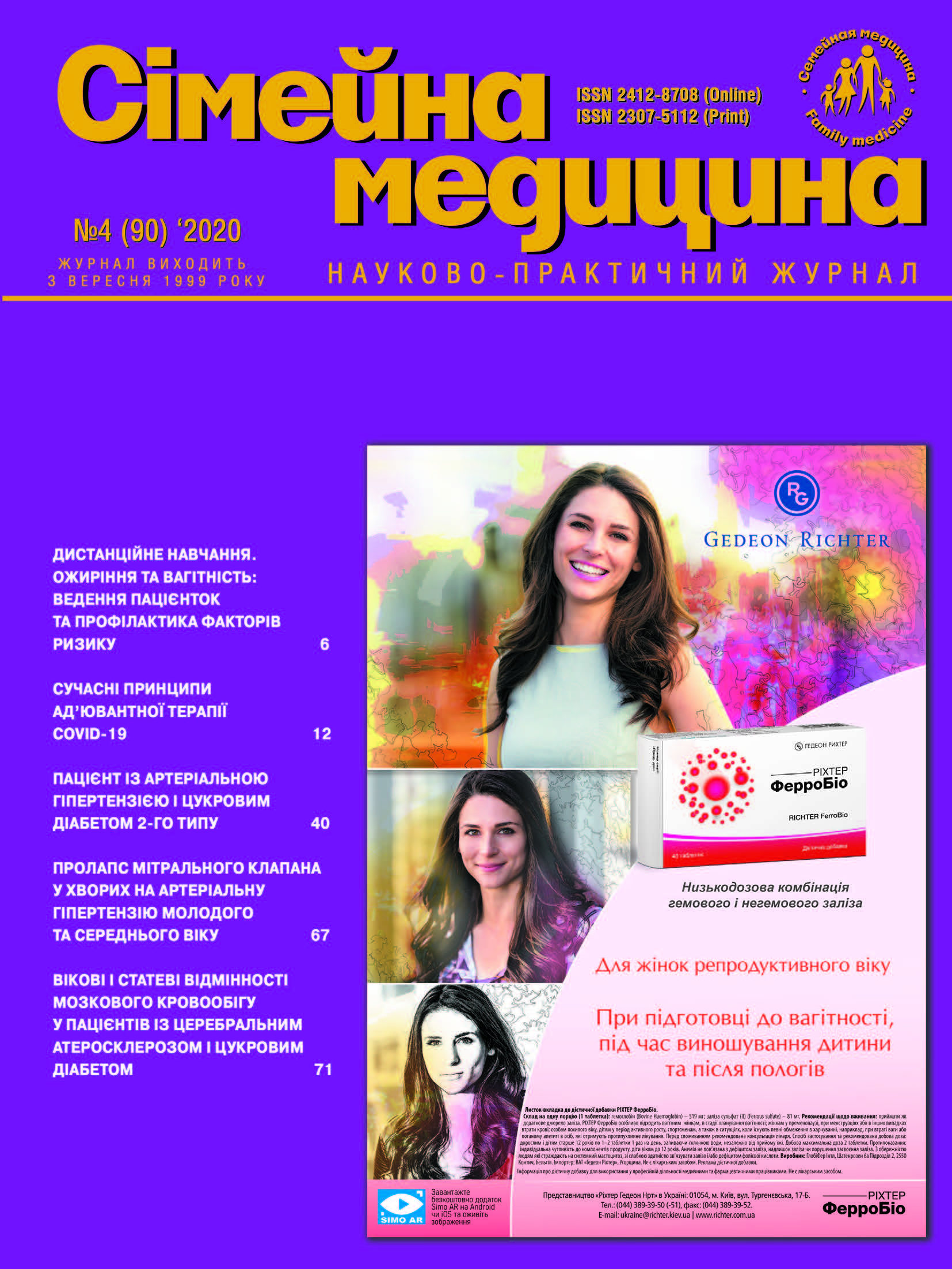Obesity and Pregnancy: Management and Prevention of Risk Factors (Distance Learning Lecture)
##plugins.themes.bootstrap3.article.main##
Abstract
Obesity is an excessive accumulation of adipose tissue in the body, which leads to increase of body weight by 20 % or more. Obesity in women of reproductive age is associated with a number of general somatic and reproductive problems, which lead to a decrease in fertility. Adipose tissue is the site of peripheral synthesis of many hormones, and is also actively involved in the function of the vascular system and the formation of the immune response, therefore, its excess content is accompanied by metabolic, hormonal, vascular and pro-inflammatory disorders. Before pragnancy, an obese patient should be examined to exclude endocrine disorders. The management of preparation of obese women for pregnancy should include: weight loss, improved insulin sensitivity (with diagnosed carbohydrate metabolism disorders), compensation/elimination of endocrine disorders (if any), support of the luteal phase with progesterone drugs.
After pregnancy has occured, obese women have an increased risk of congenital fetal anomalies, macrosomia, stillbirth, gestational hypertension, gestational diabetes mellitus, preterm birth and a number of other complications. Therefore, the management of pregnancy in a patient with overweight or obesity is associated with many difficulties, with an increased risk of developing serious obstetric and somatic complications in such patients. In this regard, the currently generally accepted rules are physiological weight gain within 9–11 kg, constant monitoring of the health of the pregnant woman and the fetus, which should have an individual approach; proper nutrition, increased physical activity, as well as diagnosis and correction of associated conditions and risk factors.##plugins.themes.bootstrap3.article.details##

This work is licensed under a Creative Commons Attribution 4.0 International License.
Authors retain the copyright and grant the journal the first publication of original scientific articles under the Creative Commons Attribution 4.0 International License, which allows others to distribute work with acknowledgment of authorship and first publication in this journal.
References
Настанова 00499. Оцінка пацієнта з ожирінням: DUODECIM Medical Publications, Ltd. – 2017. – 7 с. – Режим доступу: http://guidelines.moz.gov.ua/documents/2918?id=ebm00499&format=pdf
Настанова 00500. Лікування ожиріння DUODECIM Medical Publications, Ltd. – 2017. – 14 с. – Режим доступу: http://guidelines.moz.gov.ua/documents/2918?id=ebm00500&format=pdf
Хиць А. Менеджмент пацієнтів з ожирінням: рекомендації Європейського товариства ендокринології (European Society of Endocrinology – ESE) 2020 // Український медичний часопис. – 2020. – № 1 (135), Т. I/II. – С. 48–50. – Режим доступу: https://www.umj.com.ua/article/169614/menedzhment-patsiyentiv-z-ozhirinnyam-rekomendatsiyi-2020
Pasquali R., Casanueva F., Haluzik M. et al. (2019) European Society of Endocrinology Clinical Practice Guideline: Endocrine work-up in obesity. Eur. J. Endocrinol., 182 (Iss. 1) (https://doi.org/10.1530/EJE-19-0893).
Диагностика, лечение, профилактика ожирения и ассоциированных с ним заболеваний (национальные клинические рекомендации) // Санкт-Петербург, 2017. – 164 с.
Иловайская И.А. Влияние ожирения у женщин на фертильность и вынашивание беременности // РМЖ «Медицинское обозрение» № 1 от 26.02.2016. – С. 32–37 https://www.rmj.ru/articles/endokrinologiya/Vliyanie_oghireniya_u_ghenschin_nafertilynostyi_vynashivanie_beremennosti/#ixzz6ZtAevN8G
Перебіг вагітності та пологів у жінок з ожирінням / Корчинська О.О., Волошина У.В., Цибик Т.В. // Україна. Здоров’я нації. – № 1 (17). – 2011. – С. 89–92.
Дубоссарская З.М., Дука Ю.М. Роль ожирения в структуре невынашивания беременности // Репродуктивная эндокринология. – 2011. – № 2. – С. 9–15.
Cai G.J., Sun X.X., Zhang L., Hong Q. Association between maternal body mass index and congenital heart defects in offspring: a systematic review // Am J Obstet Gynecol. 2014. Vol. 211. P. 91.
Faucher M.A., Hastings-Tolsma M., Song J.J. et al. Gestational weight gain and preterm birth in obese women: a systematic review and meta-analysis // BJOG. 2016. Vol. 123. P. 199.
Aune D., Saugstad O.D., Henriksen T., Tonstad S. Maternal body mass index and the risk of fetal death, stillbirth, and infant death: a systematic review and meta-analysis // JAMA. 2014. Vol. 311. P. 1536.
Garvey WT, Garber AJ, Mechanick JI, et al., Obesity Scientific Committee. American association of clinical endocrinologists and Аmerican college of endocrinology consensus conference on obesity: building an evidence base for comprehensive action // Endocr Pract. 2014 Sep; 20 (9): 956–976.
Ожиріння у жінки як причина репродуктивних проблем / Жабченко І.А., Сюдмак О.Р., Коваленко Т.М. // Здоровье женщины. – 2017. – № 10 (126). – С. 34–38.
Боровкова Е.И. Ведение беременности у пациенток с избыточным весом и ожирением //Акушерство, гинекология, репродукция. – 2010. – Том 4. – № 2. – С. 21–25.
Клинический протокол диагностики и лечения. Морбидное ожирение. Метаболический синдром / Министерство здравоохранения и социального развития Республики Казахстан, 2014. – 30 с.
Наказ МОЗ України від 15.07.2011 № 417 «Про організацію амбулаторної акушерсько-гінекологічної допомоги в Україні» (зі змінами № 353 від 13.04.2016) – https://zakon.rada.gov.ua/rada/show/v0417282-11#Text
EAU Guidelines. Guidelines Office, Arnhem, The Netherlands. ISBN 978-94-92671-01-1. EAU – 2018. – 66 p. – https://uroweb.org/wp-content/uploads/EAU-Guidelines-on-Urological-Infections-2018-large-text.pdf
American Diabetes Association Standards of Medical Care in diabetes-2020 / The Journal of Clinical and Applied Research and Education. – 2020. – Vol. 43, Supplement 1|.– Pages s1–s212 / – https://care.diabetesjournals.org/content/diacare/suppl/2019/12/20/43.Supplement_1.DC1/Standards_of_Care_2020.pdf
Здоровое питание матери: лучшее начало жизни. Всемирная организация здравоохранения. Европейское региональное бюро. Копенгаген. 2016. – 104 с.





